-
 Bitcoin
Bitcoin $115000
0.12% -
 Ethereum
Ethereum $3701
4.50% -
 XRP
XRP $3.081
2.99% -
 Tether USDt
Tether USDt $0.0000
-0.01% -
 BNB
BNB $767.9
1.45% -
 Solana
Solana $169.5
3.13% -
 USDC
USDC $0.9999
0.01% -
 Dogecoin
Dogecoin $0.2106
4.30% -
 TRON
TRON $0.3334
1.62% -
 Cardano
Cardano $0.7564
2.54% -
 Stellar
Stellar $0.4165
0.76% -
 Hyperliquid
Hyperliquid $38.75
0.25% -
 Sui
Sui $3.593
3.00% -
 Chainlink
Chainlink $17.08
3.59% -
 Bitcoin Cash
Bitcoin Cash $573.6
4.35% -
 Hedera
Hedera $0.2508
-0.84% -
 Avalanche
Avalanche $23.07
6.46% -
 Ethena USDe
Ethena USDe $1.001
-0.02% -
 Litecoin
Litecoin $120.8
8.17% -
 UNUS SED LEO
UNUS SED LEO $8.943
-0.32% -
 Toncoin
Toncoin $3.400
-5.60% -
 Shiba Inu
Shiba Inu $0.00001255
1.54% -
 Uniswap
Uniswap $9.908
6.32% -
 Polkadot
Polkadot $3.718
2.10% -
 Monero
Monero $303.0
-0.74% -
 Dai
Dai $0.9999
-0.02% -
 Bitget Token
Bitget Token $4.392
0.91% -
 Cronos
Cronos $0.1403
6.31% -
 Pepe
Pepe $0.00001076
1.13% -
 Aave
Aave $267.2
1.80%
What does PoW stand for in the Bitcoin white paper
PoW, introduced by Satoshi Nakamoto in Bitcoin, secures the network by requiring miners to solve puzzles, but its high energy use raises environmental concerns.
Apr 20, 2025 at 11:35 pm
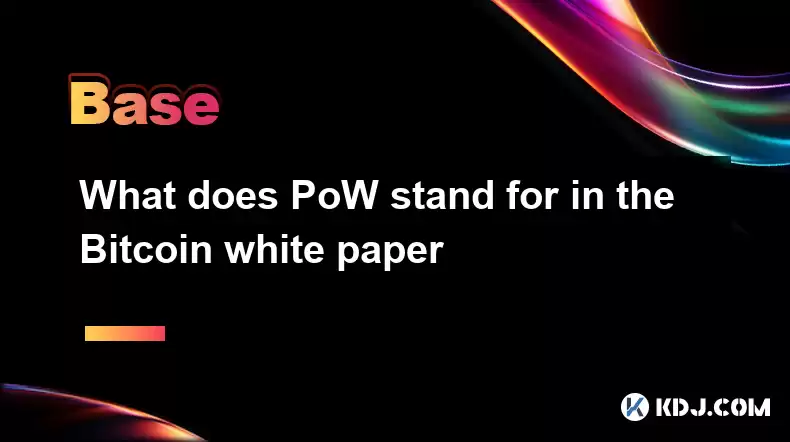
In the realm of cryptocurrencies, the term PoW, as mentioned in the Bitcoin white paper, stands for Proof of Work. This concept is fundamental to the operation of the Bitcoin network and many other cryptocurrencies that followed its model. Proof of Work is a consensus mechanism that allows the decentralized network to agree on the state of the blockchain and validate transactions securely.
The Origin and Purpose of Proof of Work
The concept of Proof of Work was not originally designed for cryptocurrencies. It was first proposed by Cynthia Dwork and Moni Naor in 1993 as a means to combat email spam and denial-of-service attacks. However, Satoshi Nakamoto, the pseudonymous creator of Bitcoin, adapted this concept to solve the double-spending problem in a decentralized currency system. In the Bitcoin white paper, Nakamoto introduced PoW as a way to achieve consensus among network participants without needing a central authority.
How Proof of Work Works in Bitcoin
In the Bitcoin network, miners compete to solve a complex mathematical puzzle. The first miner to solve the puzzle gets the right to add a new block of transactions to the blockchain and is rewarded with newly minted bitcoins and transaction fees. The puzzle involves finding a hash that meets a specific difficulty target, which is adjusted every 2016 blocks to maintain a consistent block time of approximately 10 minutes.
- Hashing: Miners take the data from the block header and run it through a cryptographic hash function, such as SHA-256. The result is a fixed-size string of characters that represents the data in a unique way.
- Difficulty Target: The difficulty target is a number that the hash must be less than or equal to. It is adjusted to ensure that the network takes roughly 10 minutes to find a valid hash for each block.
- Nonce: Miners increment a number called the nonce (number used once) and rehash the block header until they find a hash that meets the difficulty target.
The Role of Proof of Work in Security
Proof of Work plays a crucial role in securing the Bitcoin network. By requiring miners to expend computational resources to validate transactions and add them to the blockchain, PoW makes it economically unfeasible for malicious actors to alter the blockchain. The energy and computational power required to solve the puzzle serve as a deterrent against attacks, as an attacker would need to control more than 50% of the network's mining power to successfully alter the blockchain, a scenario known as a 51% attack.
Energy Consumption and Environmental Impact
One of the most debated aspects of Proof of Work is its significant energy consumption. Bitcoin mining requires vast amounts of electricity to power the computers that solve the mathematical puzzles. This has led to concerns about the environmental impact of Bitcoin and other PoW-based cryptocurrencies. Critics argue that the energy consumption is unsustainable and contributes to carbon emissions. Proponents, however, point out that the energy used in mining can come from renewable sources and that the security provided by PoW justifies the energy expenditure.
Alternatives to Proof of Work
Due to the energy concerns associated with PoW, alternative consensus mechanisms have been developed. Proof of Stake (PoS) is one such alternative, which is used by cryptocurrencies like Ethereum 2.0. In PoS, validators are chosen to create new blocks based on the number of coins they hold and are willing to "stake" as collateral, rather than on their computational power. This approach is considered more energy-efficient but has its own set of challenges and security considerations.
The Economic Incentives of Proof of Work
Proof of Work also creates economic incentives that drive the security and decentralization of the Bitcoin network. Miners are rewarded with bitcoins for their efforts, which encourages them to continue validating transactions and maintaining the network. This reward system also helps to distribute new bitcoins into circulation in a controlled manner. Additionally, the competition among miners to solve the puzzle leads to a more decentralized network, as it is difficult for any single entity to control a majority of the mining power.
The Impact of Proof of Work on Transaction Fees
Transaction fees in the Bitcoin network are influenced by the Proof of Work mechanism. Miners prioritize transactions with higher fees, as these are more profitable to include in the blocks they mine. This creates a market for transaction fees, where users can pay more to have their transactions processed faster. The fee market helps to manage the limited space in each block and ensures that the network can handle a high volume of transactions efficiently.
Frequently Asked Questions
Q: How does Proof of Work prevent double-spending in Bitcoin?
A: Proof of Work prevents double-spending by ensuring that once a transaction is included in a block and added to the blockchain, it is extremely difficult to alter. The energy and computational power required to change a block and all subsequent blocks make it economically unfeasible for an attacker to double-spend coins.
Q: Can Proof of Work be used in other applications outside of cryptocurrencies?
A: Yes, Proof of Work can be used in various applications beyond cryptocurrencies. It has been used in systems to prevent spam emails, protect against denial-of-service attacks, and even in scientific computing to distribute tasks across a network of computers.
Q: How does the difficulty adjustment in Bitcoin's Proof of Work work?
A: The difficulty adjustment in Bitcoin's Proof of Work is designed to maintain a consistent block time of approximately 10 minutes. Every 2016 blocks, the network calculates the average time it took to mine these blocks. If the average time is less than 10 minutes, the difficulty is increased; if it is more than 10 minutes, the difficulty is decreased. This ensures that the network adapts to changes in total mining power.
Q: What are the main criticisms of Proof of Work?
A: The main criticisms of Proof of Work include its high energy consumption, which leads to environmental concerns, and the potential for centralization of mining power in the hands of a few large mining pools. Critics also argue that the computational resources used in PoW could be better utilized for other purposes.
Disclaimer:info@kdj.com
The information provided is not trading advice. kdj.com does not assume any responsibility for any investments made based on the information provided in this article. Cryptocurrencies are highly volatile and it is highly recommended that you invest with caution after thorough research!
If you believe that the content used on this website infringes your copyright, please contact us immediately (info@kdj.com) and we will delete it promptly.
- Velo Universe, DEX, and DeFi Security: Navigating the Future of Decentralized Trading
- 2025-08-05 09:25:13
- Bitget Wallet Revolutionizes Solana with Gas-Free Transactions: A New Era for DeFi
- 2025-08-05 09:25:13
- Ozak AI, Crypto Boom, and ROI Potential: Is This the Next Big Thing?
- 2025-08-05 09:25:24
- Solana's ETF Hopes & the All-Time High Chase: Is SOL Set to Soar?
- 2025-08-05 09:25:24
- Coinbase's Brian Armstrong and the Art of Focused Work: A Deep Dive
- 2025-08-05 09:25:30
- Uniswap Price Prediction: Bullish Reversal on the Horizon?
- 2025-08-05 09:25:30
Related knowledge
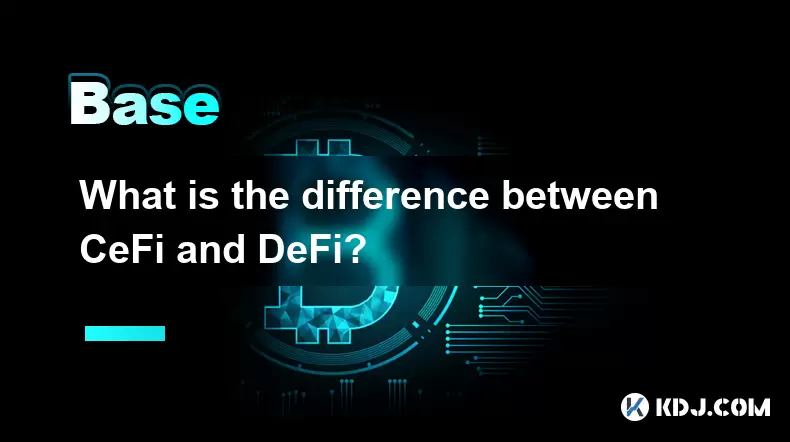
What is the difference between CeFi and DeFi?
Jul 22,2025 at 12:28am
Understanding CeFi and DeFiIn the world of cryptocurrency, CeFi (Centralized Finance) and DeFi (Decentralized Finance) represent two distinct financia...
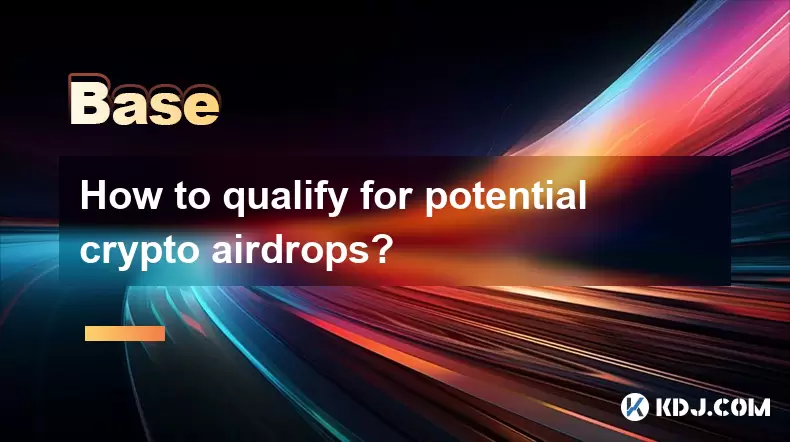
How to qualify for potential crypto airdrops?
Jul 23,2025 at 06:49am
Understanding What Crypto Airdrops AreCrypto airdrops refer to the distribution of free tokens or coins to a large number of wallet addresses, often u...
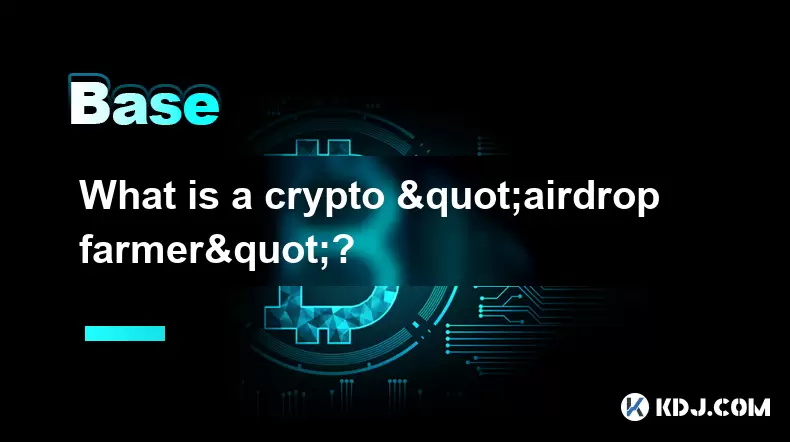
What is a crypto "airdrop farmer"?
Jul 24,2025 at 10:22pm
Understanding the Role of a Crypto 'Airdrop Farmer'A crypto 'airdrop farmer' refers to an individual who actively participates in cryptocurrency airdr...
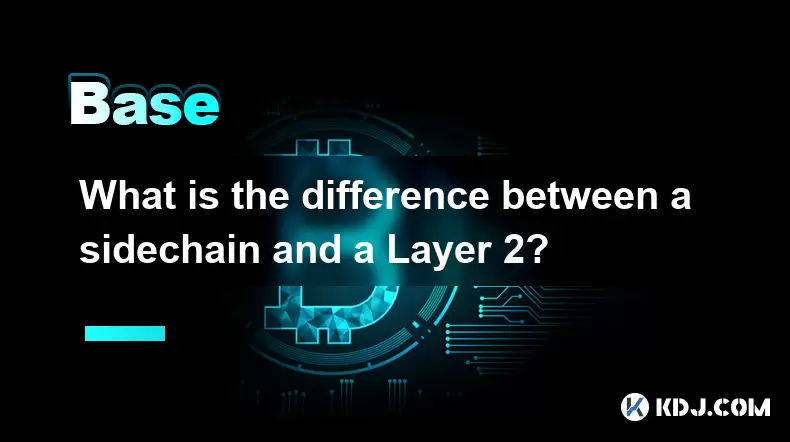
What is the difference between a sidechain and a Layer 2?
Jul 20,2025 at 11:35pm
Understanding the Concept of SidechainsA sidechain is a separate blockchain that runs parallel to the main blockchain, typically the mainnet of a cryp...

What is the Inter-Blockchain Communication Protocol (IBC)?
Jul 19,2025 at 10:43am
Understanding the Inter-Blockchain Communication Protocol (IBC)The Inter-Blockchain Communication Protocol (IBC) is a cross-chain communication protoc...
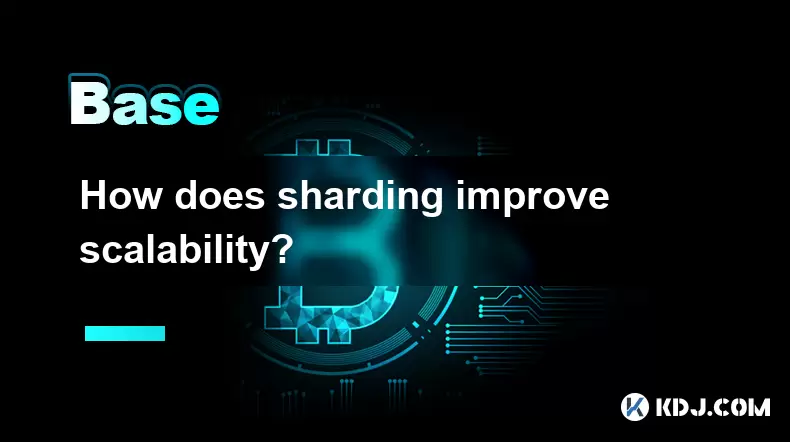
How does sharding improve scalability?
Jul 20,2025 at 01:21am
Understanding Sharding in BlockchainSharding is a database partitioning technique that is increasingly being adopted in blockchain technology to enhan...

What is the difference between CeFi and DeFi?
Jul 22,2025 at 12:28am
Understanding CeFi and DeFiIn the world of cryptocurrency, CeFi (Centralized Finance) and DeFi (Decentralized Finance) represent two distinct financia...

How to qualify for potential crypto airdrops?
Jul 23,2025 at 06:49am
Understanding What Crypto Airdrops AreCrypto airdrops refer to the distribution of free tokens or coins to a large number of wallet addresses, often u...

What is a crypto "airdrop farmer"?
Jul 24,2025 at 10:22pm
Understanding the Role of a Crypto 'Airdrop Farmer'A crypto 'airdrop farmer' refers to an individual who actively participates in cryptocurrency airdr...

What is the difference between a sidechain and a Layer 2?
Jul 20,2025 at 11:35pm
Understanding the Concept of SidechainsA sidechain is a separate blockchain that runs parallel to the main blockchain, typically the mainnet of a cryp...

What is the Inter-Blockchain Communication Protocol (IBC)?
Jul 19,2025 at 10:43am
Understanding the Inter-Blockchain Communication Protocol (IBC)The Inter-Blockchain Communication Protocol (IBC) is a cross-chain communication protoc...

How does sharding improve scalability?
Jul 20,2025 at 01:21am
Understanding Sharding in BlockchainSharding is a database partitioning technique that is increasingly being adopted in blockchain technology to enhan...
See all articles

























































































